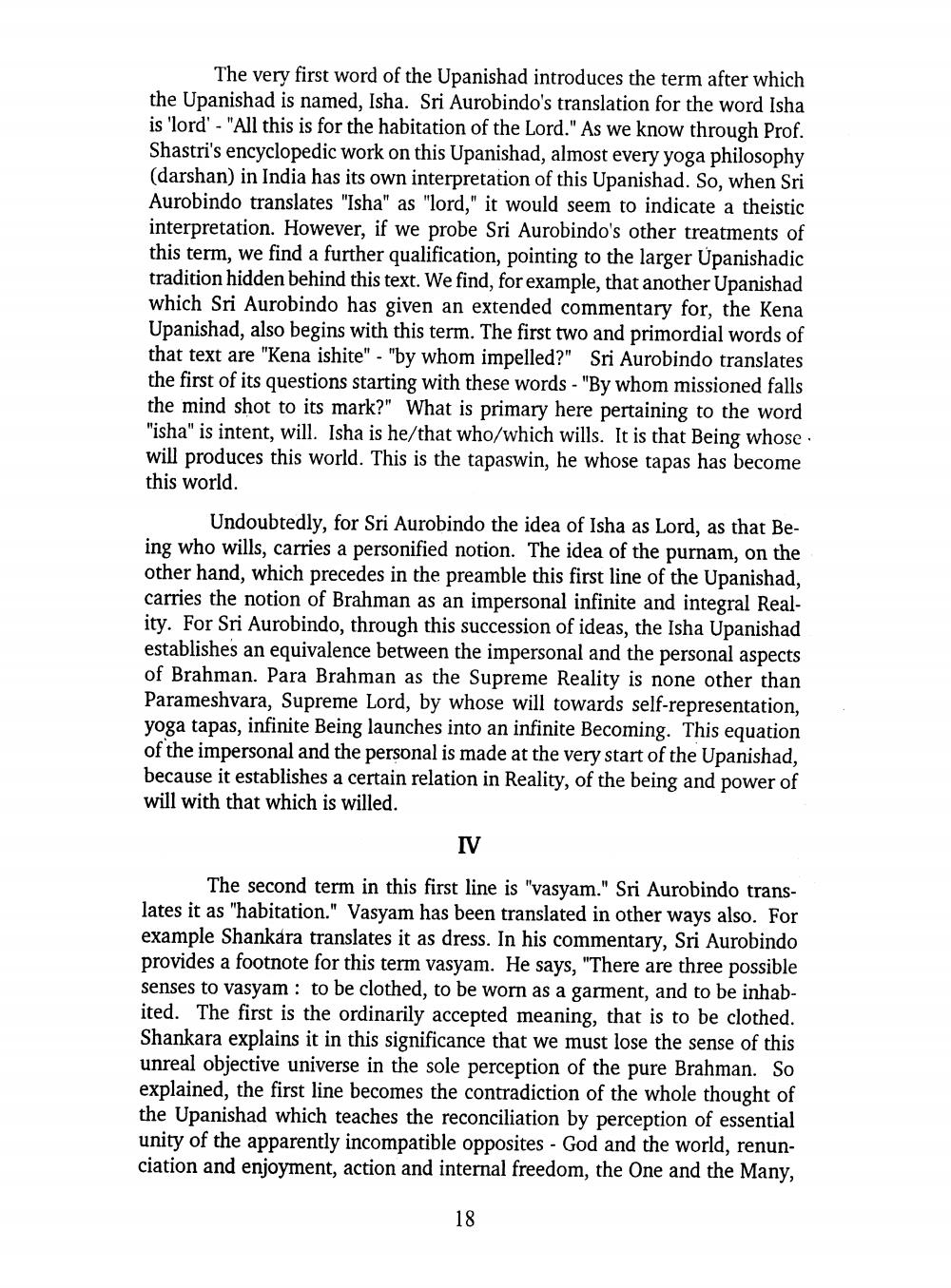________________
The very first word of the Upanishad introduces the term after which the Upanishad is named, Isha. Sri Aurobindo's translation for the word Isha is 'lord' - "All this is for the habitation of the Lord." As we know through Prof. Shastri's encyclopedic work on this Upanishad, almost every yoga philosophy (darshan) in India has its own interpretation of this Upanishad. So, when Sri Aurobindo translates "Isha" as "lord," it would seem to indicate a theistic interpretation. However, if we probe Sri Aurobindo's other treatments of this term, we find a further qualification, pointing to the larger Upanishadic tradition hidden behind this text. We find, for example, that another Upanishad which Sri Aurobindo has given an extended commentary for, the Kena Upanishad, also begins with this term. The first two and primordial words of that text are "Kena ishite" - "by whom impelled?" Sri Aurobindo translates the first of its questions starting with these words - "By whom missioned falls the mind shot to its mark?" What is primary here pertaining to the word "isha" is intent, will. Isha is he/that who/which wills. It is that Being whose will produces this world. This is the tapaswin, he whose tapas has become this world.
Undoubtedly, for Sri Aurobindo the idea of Isha as Lord, as that Being who wills, carries a personified notion. The idea of the purnam, on the other hand, which precedes in the preamble this first line of the Upanishad, carries the notion of Brahman as an impersonal infinite and integral Reality. For Sri Aurobindo, through this succession of ideas, the Isha Upanishad establishes an equivalence between the impersonal and the personal aspects of Brahman. Para Brahman as the Supreme Reality is none other than Parameshvara, Supreme Lord, by whose will towards self-representation, yoga tapas, infinite Being launches into an infinite Becoming. This equation of the impersonal and the personal is made at the very start of the Upanishad, because it establishes a certain relation in Reality, of the being and power of will with that which is willed.
IV
The second term in this first line is "vasyam." Sri Aurobindo translates it as "habitation." Vasyam has been translated in other ways also. For example Shankara translates it as dress. In his commentary, Sri Aurobindo provides a footnote for this term vasyam. He says, "There are three possible senses to vasyam: to be clothed, to be worn as a garment, and to be inhabited. The first is the ordinarily accepted meaning, that is to be clothed. Shankara explains it in this significance that we must lose the sense of this unreal objective universe in the sole perception of the pure Brahman. So explained, the first line becomes the contradiction of the whole thought of the Upanishad which teaches the reconciliation by perception of essential unity of the apparently incompatible opposites - God and the world, renunciation and enjoyment, action and internal freedom, the One and the Many,
18




